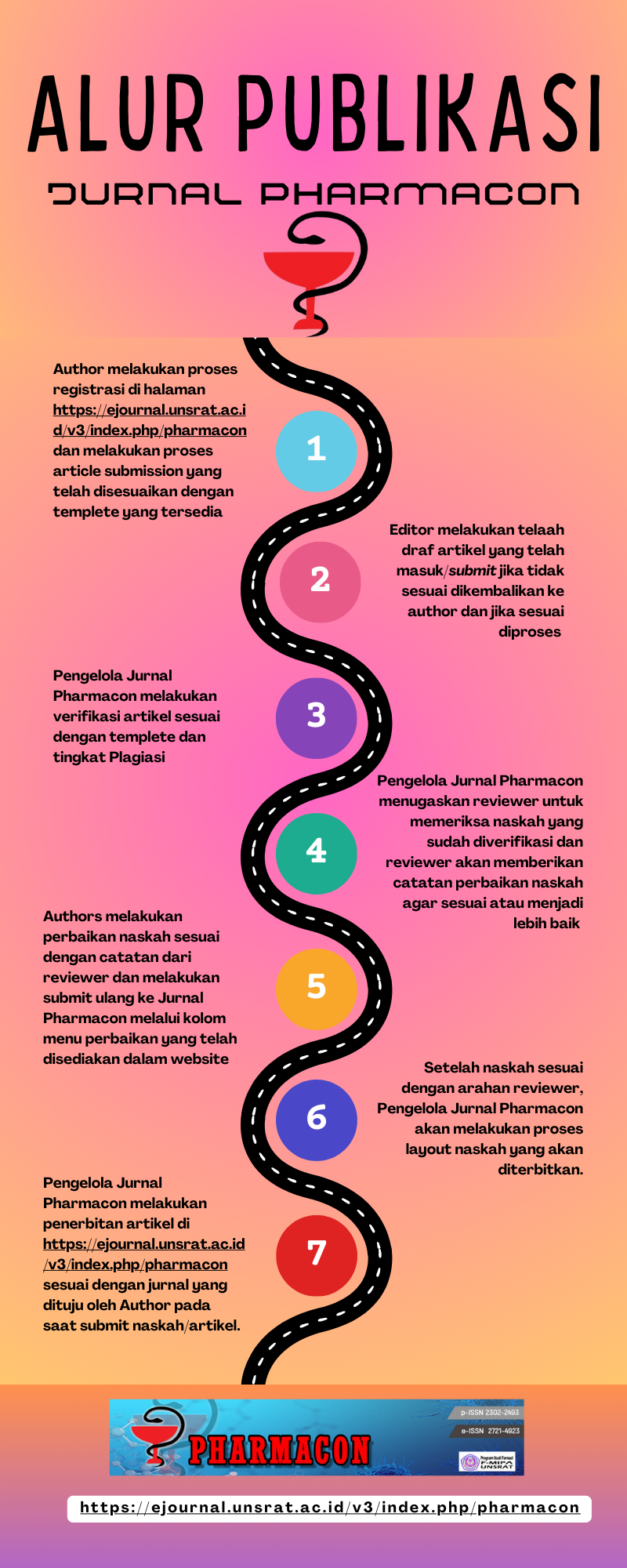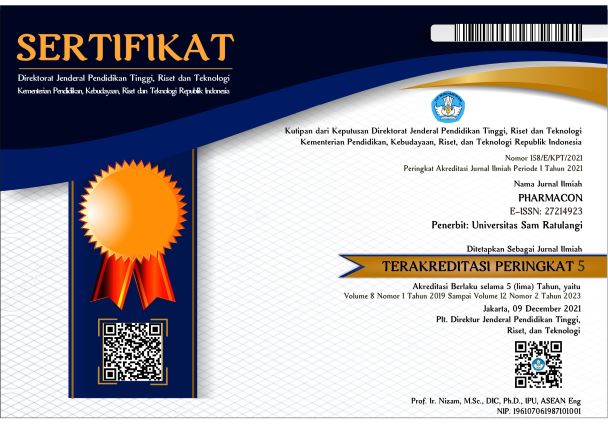UJI AKTIVITAS ANTIOKSIDAN DARI EKSTRAK ETANOL BUNGA KANA MERAH (Canna coccinea Mill) MENGGUNAKAN METODE DPPH
DOI:
https://doi.org/10.35799/pha.8.2019.29328Keywords:
Bunga Canna coccinea Mill, Antioksidan, Ekstraksi, DPPHAbstract
Cana plants are flower ornamental plants whose genus or margins are the only ones in the family Cannacea. This study aims to determine the activity of antioxidant compounds from ethanol extract of  Canna coccinea Mill flower. by using the DPPH method. Flowers Canna coccinea  Mill  extracted using maceration with ethanol as a solvent. As a parameter, testing of antioxidant activity was carried out using the DPPH (1,1 – diphenyl-2-pikrilhidrazil) method which was measured using UV-Vis Spectrophotometry at a wavelength of 517nm. The result showed that ethanol of Canna coccinea Mill,flower proven to have antioxidant activity in each concentration test. The highest concentration has an free radical scavenging activity by reaching of 56,00%.
Keywords: Flowers Canna coccinea Mill, Antioxidant, Extraction, DPPH
Â
ABSTRAK
Tanaman kana adalah tanaman hias bunga yang genus atau marganya merupakan satu-satunya dalam family Cannaceae. Penelitian ini bertujuan untuk mengetahui aktivitas senyawa antioksidan dari ekstrak etanol bunga Canna coccinea Mill. dengan menggunakan metode DPPH. Bunga Canna coccinea Mill. diekstraksi menggunakan metode maserasi dengan etanol sebagai pelarut. Sebagai parameter, pengujian aktivitas antioksidan dilakukan dengan metode DPPH (1,1-difenil-2-pikrilhidrazil) yang diukur menggunakan Spektrofotometri UV-Vis pada panjang gelombang 517 nm. Hasil penelitian menunjukkan ekstrak etanol bunga Canna coccinea Mill. terbukti memiliki aktivitas antioksidan disetiap konsentrasi pengujian. Konsentrasi tertinggi memiliki aktivitas penangkal radikal bebas dengan mencapai presentase 56,00%.
Kata Kunci : Bunga Canna coccinea Mill, Antioksidan, Ekstraksi, DPPH
Downloads
Published
How to Cite
Issue
Section
License
Authors who publish with this journal agree to the following terms:
- Authors retain copyright and grant the journal right of first publication with the work simultaneously licensed under a Creative Commons Attribution-NonCommercial 4.0 International License that allows others to share the work with an acknowledgement of the work's authorship and initial publication in this journal.
- Authors are permitted and encouraged to post their work online (e.g., in institutional repositories or on their website) prior to and during the submission process, as it can lead to productive exchanges, as well as earlier and greater citation of published work (See The Effect of Open Access)










